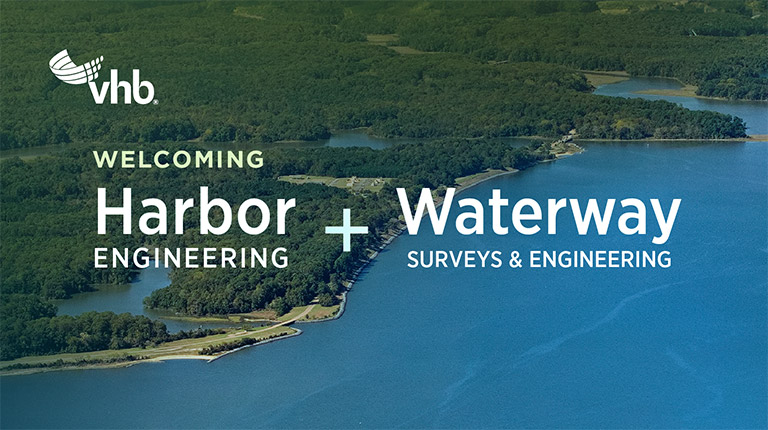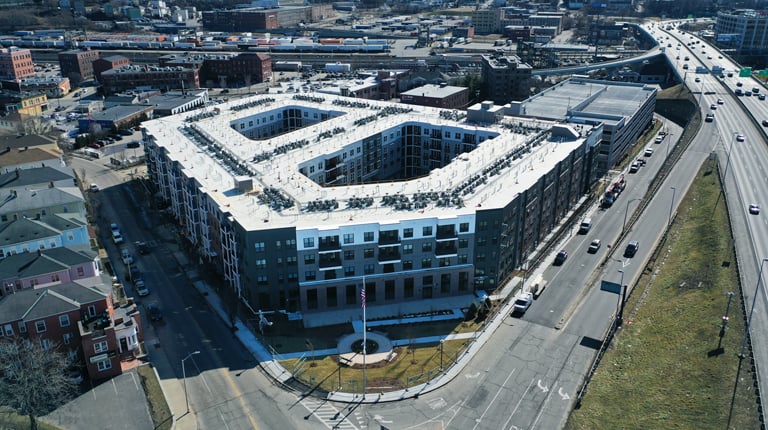
VHB: How do you view Boston’s competitive position relative to other East Coast markets?
Brittany: The Boston market offers distinct advantages and challenges. Due to the lack of a large shipping port which shapes many of the mid-Atlantic and southeast markets, Boston relies much more heavily on air for overseas shipping, causing Boston to be an end-user market. It’s also a highly constrained market that lacks vast tracts of land, and its regulatory complexities lead to higher cost-of-entry for development projects. However, Boston's unique advantages are its highly educated workforce, sophisticated healthcare networks, and mature life sciences industry. The intellectual capital is particularly attractive to high-tech and specialized industries, providing a distinct competitive edge that is hard to match elsewhere on the East Coast.
VHB: What are the top building features that tenants are prioritizing when searching for new space today?
Brittany: Today’s tenants are particularly keen on high bay storage space and outdoor storage space. Much of today’s aged inventory does not provide the interior clearance heights or exterior allocation for trailer drops that appeal to tenants in the market. New inventory should prioritize accommodating these features to increase marketability in a modern market.
VHB: What are the biggest challenges in upgrading older buildings?
Brittany: Retrofitting older buildings presents several challenges:
- Often there is a desire to add loading docks which can require significant exterior alterations to provide exterior maneuvering space, lowering existing building foundations, and disrupting the site drainage patterns.
- Today’s modern storage techniques require taller clear heights and stronger floors than often exist in older buildings. Owners are exploring how to increase available interior heights by either raising the roofs or eliminating floors to multilevel buildings. Often interior slabs need to be replaced to be stronger.
- Older buildings typically have smaller column spacings, which can interfere with modern operational flows and require substantial structural reconfigurations to open up the space.
- Electrical services often need to be upgraded and increased to meet the demands of a modern energy code and ever-increasing reliance on improved technology.
VHB: What key considerations are integrated into sustainable and resilient building upgrades?
Brittany: Sustainability and resiliency continue to be heavily driven by regulatory requirements rather than by end-user requests. The Massachusetts Energy Code is catapulting the transition of building reliance on natural gas and propane toward fully electrified buildings. Many new industrial buildings are being constructed to rely fully on electricity for heating, which is a significant transformation in just recent years. Some users are also beginning to plan for the transition to an electric fleet. Implementation of solar (rooftop and pavement canopy), as well as battery storage systems, can help offset the economic impacts of the fully electric heating and transportation systems.
VHB: How do you design spaces to maximize flexibility for a wide range of tenants?
Brittany: Planning should consider more than today’s tenant but also factor the second and third generation tenants in the building. Maximizing flexibility of both interior and exterior spaces is key. A few examples for consideration include:
- Distribute employee parking around the building's exterior to allow for multiple entrances, accommodating multi-tenant options.
- Distribute loading docks strategically such that in a multitenant situation sufficient loading access is provided.
- Plan for the ability to add loading docks in the future by providing knockouts in the exterior building walls and allowing sufficient exterior maneuvering area. While your first tenant may only request 10 docks, you can add more in the future, widening your marketing pool of second and third generation tenants.
- Flexibility of exterior spaces such that you can easily convert pavement area to employee parking or trailer storage or loading docks.
VHB: What trends will continue to shape development in the industrial sector?
Brittany: As we resettle from the industrial boom that occurred during the pandemic, we expect to see a return to the fundamentals. Throughout the boom of 2020-2022, less than ideal sites were being transformed into industrial space, ignoring some of the basic guidance typically driving industrial development. The key drivers moving forward will likely be the ideals of the past, including strategic location and ease of construction. However, there will continue to be new modern factors impacting progress, particularly utility (electricity) availability.
Connect with Brittany via email or LinkedIn and learn more about VHB’s industrial services.


